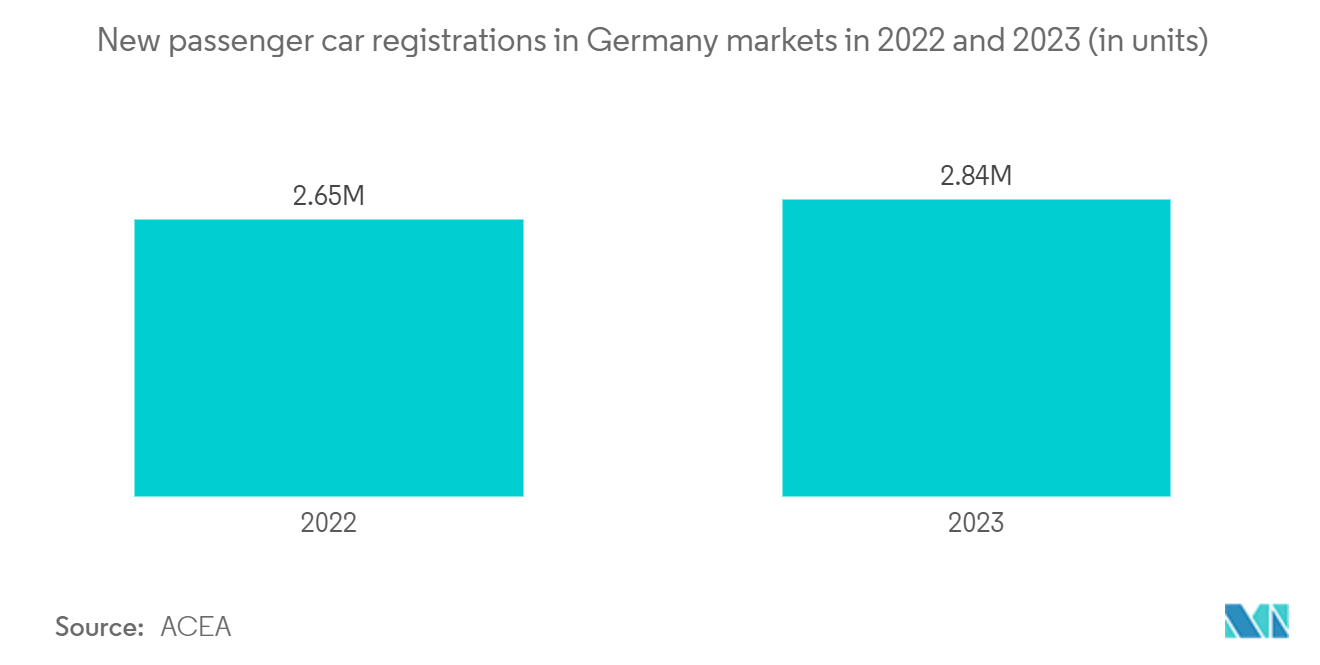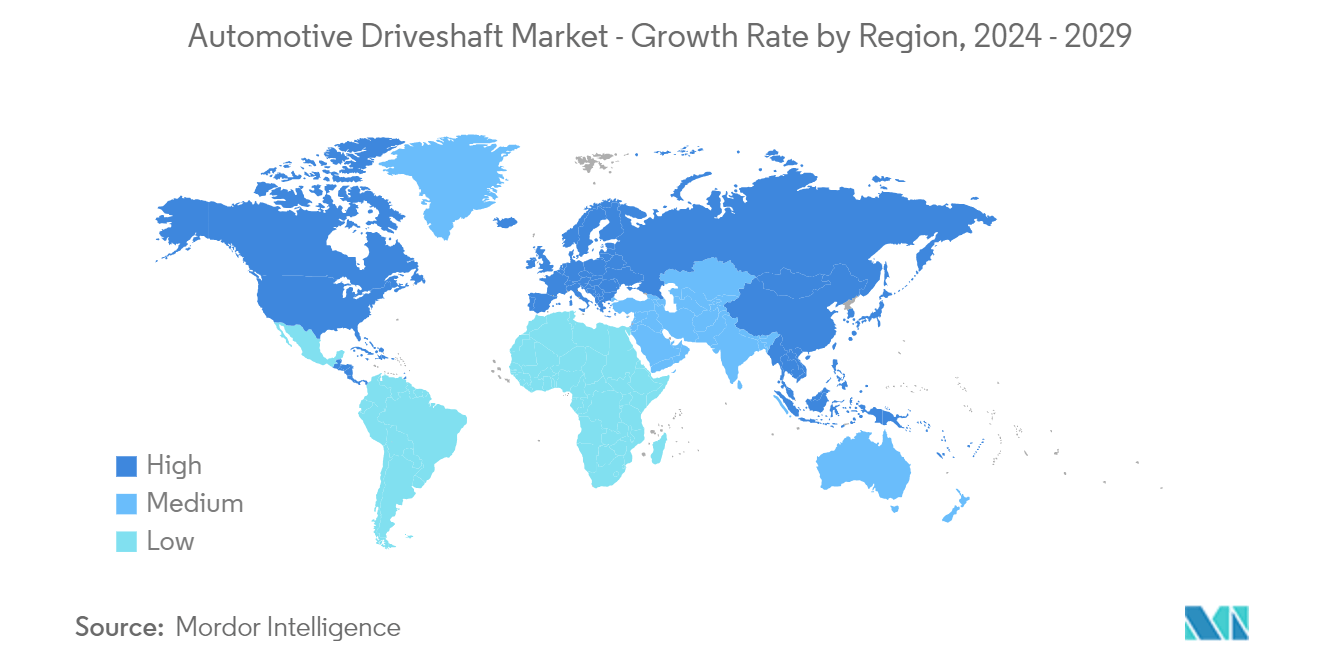Market Trends of Automotive Drive Shaft Industry
Passenger Cars Hold the Highest Share in the Market
Passenger car sales are high in the automotive market due to features such as stylish design, size, and economic value. High demand for luxury SUVs with high performance propels this growth. Therefore, many companies are focusing on the launch of various new passenger car models. For instance:
- In May 2023, Land Rover released details about its most powerful and fastest production SUV yet. The new Range Rover Sport SV packs 635 hp with a supercharged 5-liter V8 engine.
Electric vehicles have become an integral part of the automotive industry, and they represent a pathway toward achieving energy efficiency, along with reduced emissions of pollutants and other greenhouse gases. The growing environmental concerns and favorable government initiatives are the major factors driving this growth.
According to the International Energy Agency, in Q1 2024, electric car sales grew by around 25% compared to Q1 2023, with China holding the largest share of 45%, followed by Europe with 25%.
Emission laws at the governmental and regional levels have been one of the key causes propelling the EV industry in general. Road transport is commonly acknowledged as the single-largest source of air pollution in Europe. To combat air pollution, the EU Council adopted "Directive 96/62/EC on ambient air quality assessment and management," which establishes emission targets for various harmful compounds in the atmosphere. The most important pollutants produced by cars are nitrogen oxides (NOx) and fine dust (particulate matter - PM), both of which are now capped at 40 g/ m3 per year.
Europe has set a lofty target of being climate-neutral by 2050. The European Commission plans to publish several new legislative proposals over the next few years to meet this goal, many of which are aimed at improving mobility. By the end of this decade, the European Commission aims to have at least 30 million electric vehicles on the road, a tremendous increase from the current 1.4 million EVs on European roads. To achieve this aim, a set of policies and targets must be in place to guide states, businesses, and consumers on the correct path.
The demand for passenger cars may also boost the demand for sophisticated drive shafts. Manufacturers of drive shafts are researching novel materials and manufacturing procedures to build drive shafts that can handle the requirements of these vehicles. Some producers, for example, use carbon fiber instead of steel to minimize weight, while others use innovative composite materials that can withstand high torque levels. For instance:
- In January 2023, Kalyani Mobility Drivelines (KMD), a manufacturer of driveline components, introduced a lineup of constant-velocity (CV) driveshafts for EVs and other specialty vehicles.
Owing to such factors and the expansion of the electric and hybrid vehicle market, the automotive drive shaft market will likely continue to grow and evolve.

Asia-Pacific is Expected to Hold a Significant Share in the Market
China and India are the prominent countries in terms of vehicle manufacturing in Asia-Pacific. The countries have a major presence of automotive manufacturers, which may create lucrative opportunities for the market during the forecast period.
The governments in the region have introduced many incentive plans to bolster auto sales. They are also offering subsidies on the purchase of electric vehicles to encourage the expansion of the region’s automotive industry. For instance:
- With the growing sales and production of passenger cars, the Indian automotive industry has been witnessing exponential growth Y-o-Y. For instance, sales of passenger cars increased from 14,67,039 to 17,47,376 units, utility vehicles from 14,89,219 to 20,03,718 units, and vans from 1,13,265 to 1,39,020 units in FY 2022-23 compared to the previous financial year.
The Indian economy is expanding as there is a rise in the disposable income of middle-income consumers. This factor, in turn, has a favorable impact on the demand for automobiles. Vehicle manufacturing has increased rapidly over the last five years due to the country's cheap production costs. The automotive sensor market is gaining traction as vehicle manufacturing increases.
The vehicular fleet in Indian cities is much younger than in EU nations and the United States, where the average age of cars is eight years and 11 years, respectively.
Major automotive component manufacturers are expanding their manufacturing facilities and introducing new products across the region. They are expected to witness major growth in the market during the forecast period. For example, KYB Corporation (KYB) announced plans to develop electric oil pumps for eAxle drive motor systems in electric vehicles (EVs) by March 2023. The company also announced plans to build oil pumps for lubricating and cooling eAxles and develop them as a new business for the era of electrification.
Thus, considering such developments and trends in the market, the Asia-Pacific automotive drive shaft market is expected to have significant growth during the forecast period.


